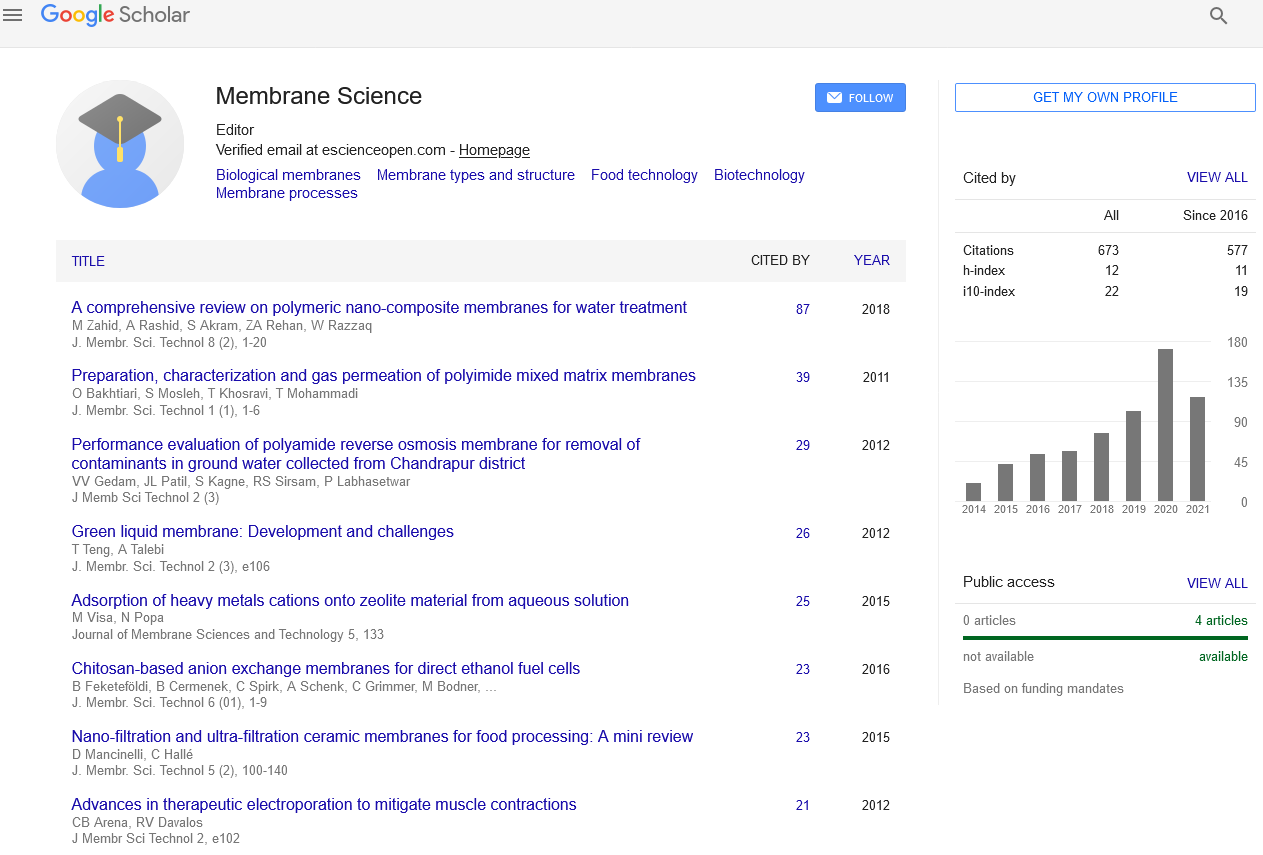Indexed In
- Open J Gate
- Genamics JournalSeek
- Ulrich's Periodicals Directory
- RefSeek
- Directory of Research Journal Indexing (DRJI)
- Hamdard University
- EBSCO A-Z
- OCLC- WorldCat
- Proquest Summons
- Scholarsteer
- Publons
- Geneva Foundation for Medical Education and Research
- Euro Pub
- Google Scholar
Useful Links
Share This Page
Journal Flyer

Open Access Journals
- Agri and Aquaculture
- Biochemistry
- Bioinformatics & Systems Biology
- Business & Management
- Chemistry
- Clinical Sciences
- Engineering
- Food & Nutrition
- General Science
- Genetics & Molecular Biology
- Immunology & Microbiology
- Medical Sciences
- Neuroscience & Psychology
- Nursing & Health Care
- Pharmaceutical Sciences
Abstract
Feasibility of employing Ultrasound for in-situ fouling control in an Aerobic Membrane Bioreactor
Rutuja S. Kamble* and AB Pandit
In order to design membrane bioreactor, it is essential of a) pre-treatment of wastewater, b) comprehend the behavior of microorganisms in the wastewater to be treated, c) in-situ fouling reduction by controlling the aeration intensity and ultrasound irradiation.
The current study has been carried out to study the membrane fouling control with appropriate membrane module design and operating conditions (HRT=10, 12 and 15 hrs, aeration intensity=8 L/min) using pre-treated wastewater with optimum coagulant [1]. The major components of organic matters in the membrane foulants are identified as proteins, polysaccharides and lipids by the Fourier transform infrared spectroscopy (FTIR) of the collected filter cake.
Ultrasonic irradiation is an effective membrane cleaning technique for membrane bioreactors (MBRs) because of several advantages such as high flux-recovery capacity and in situ application without interrupting the filtration process. In this work, MBR equipped with flat sheet polyvinylidene fluoride ultrafiltration membranes were operated for 10 hrs with periodic ultrasonication cleaning technique consisting of sonication at low power (15 W) with different frequencies (25, 30 and 45 kHz) and aerated backwashing. The MBR was analysed to verify the effects of the irradiated waves on membrane integrity, effluent quality and process performance. The best transmembrane pressure control with efficient filter cake removal was achieved at the US irradiation frequency of 25 kHz without any adverse effect on membrane integrity.
Published Date: 2021-01-23; Received Date: 2020-12-20


